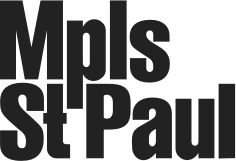
Shutterstock
hands-header
It’s a scorching June day—the kind of heat that turns a parking lot into a griddle. I’m staying cool, though, sheltering in the beneficent air-conditioning of a St. Cloud Barnes and Noble. Abdi Mahad, meanwhile, is scribbling on a scrap of paper, deep into giving me a Somali phonics lesson.
“For example, H-A-T is hat, right?” says Mahad. He gives the Somali translation, a five-letter word: “It’s koofi. K-O-O-F-I.”
Mat (derin) and bat (fiidmeer) are similarly unruly, so he’s subbed out the usual Seussical lexicon for shorter Somali words, like bad, which means sea. Mahad’s phonics lessons are part of the elementary-level Somali immersion curriculum he’s created for St. Cloud’s school district, the first in the state—and possibly the nation.
Mahad, who has a master’s in applied linguistics and curriculum design, worked as an English teacher in St. Cloud schools. When the pandemic hit, he and his wife, Hudda Ibrahim, an author and DEI consultant, founded Diverse Voices Press, which champions books by writers from underrepresented communities. The couple has written a number of children’s books of their own, including a Somali-language ABC book that I’m currently browsing.
Mahad tells me that the St. Cloud school district reached out to him about creating Somali-language curriculum—first for high schoolers and now for elementary students. The program, offered at two schools to incoming kindergartners, will be dual immersion, meaning half the day is taught in Somali, the other half in English. Mahad’s curriculum covers everything from reading comprehension to math. He partnered with language experts across Somalia to create it and is bringing it to four other school districts across the country. A number of other schools across the nation are looking at implementing it as well.
The program is expected to teach both native Somali speakers and non-native speakers. Mahad explains that though many students speak Somali at home, they don’t necessarily learn to read and write it. He says Somali is a traditionally oral language, though the Somali Latin alphabet became the official written script of Somalia in 1972—and, he notes, some students’ parents’ educations may have been interrupted by the civil war.
“Research shows that kids who learn to first read and write their native language gain the skills to better acquire a second language,” says Mahad. “To know, That’s a noun, that’s a verb, that’s an adjective.”
In that way, the immersion program is designed to support students’ overall academic outcomes. But there are other benefits, too. Mahad says many parents have thanked him for his work—he’s even heard, anecdotally, of some Somali families relocating to send their children to St. Cloud schools, because language, as Mahad well knows, is intertwined with culture. Born in Somalia, Mahad lived there until he was a teenager. At 14, he transcribed his grandmother’s Somali folk tales into a book and printed a handful of copies. Now, he’s working on a longer version with 120 folk tales. He says his students inspired him.
“Those who were born in the United States, they didn’t know anything about Somali books,” he says. “I’ve had kids tell me that they didn’t know we had superheroes in Somali culture. They thought it was only a white, Western, European thing.”
As for native English-speaking students, research has shown that bilingualism has many cognitive benefits for children. St. Cloud has offered Spanish and Chinese immersion for more than a decade. Mahad adds another benefit: the cross-cultural aspect. “We have a lot of Somalis in Minnesota—more than anywhere else other than Somalia,” says Mahad. “It’s not like Spanish or Chinese, but it’s a way to get to know your neighbor’s language.”
That may seem like small potatoes to some. But it’s not—especially in St. Cloud, where the East African population has grown in recent decades, many having been resettled there as refugees. Amid these changing demographics, the Somali community has seen some backlash from anti-Muslim and anti-immigration activists.
In 2017, Mahad and Ibrahim started a monthly community gathering called Dine and Dialogue, where neighbors came to discuss racial inclusivity, diversity, and other issues in St. Cloud. At first, they cooked for guests in their home, but the gatherings got so big they moved to the public library.
Dine and Dialogue didn’t entirely stamp out racism and Islamophobia in the community, of course—but it did its job, which was to get people talking to one another. Some attendees even came wearing MAGA hats, but Mahad says they mostly left happy, with a deeper understanding of their neighbors than when they came. It’s easy to imagine his vision eventually playing out in such a space, with Somali words and phrases floating above the din.
“I like to imagine a place where Somalis and non-Somalis speak English and Somali and Spanish and Chinese,” says Mahad. “They’ll become world citizens. Our small slice of Minnesota will have a student body that can interact with the world, can work anywhere, and can learn to live with any kind of people.”


